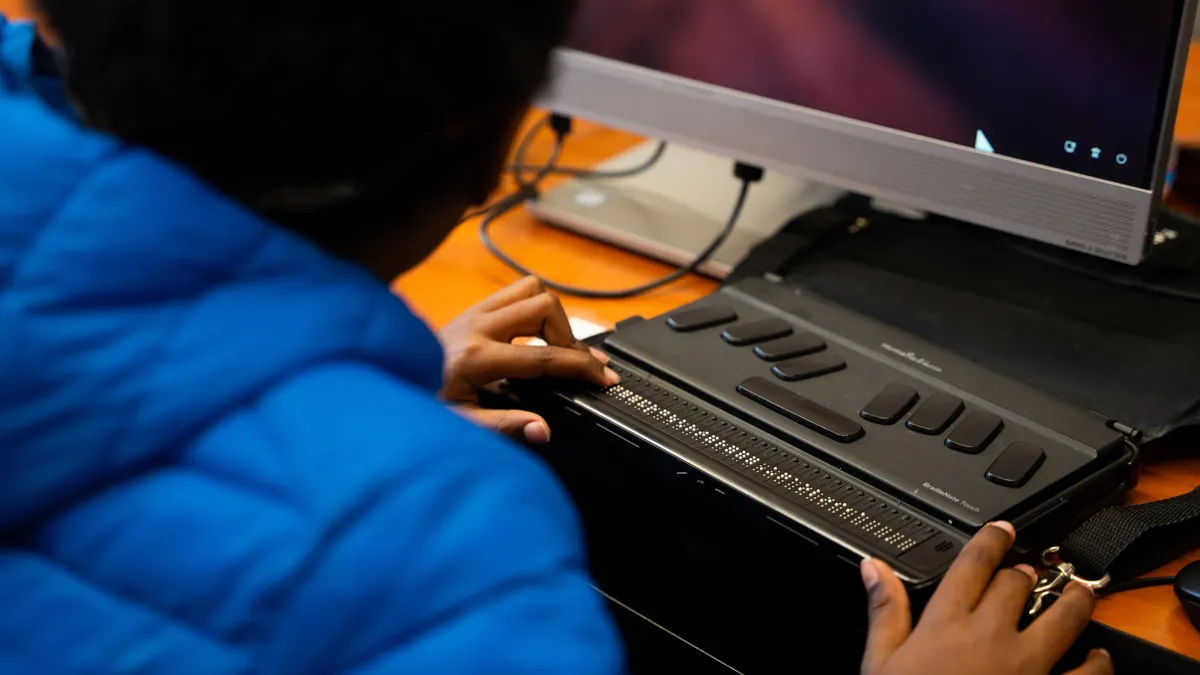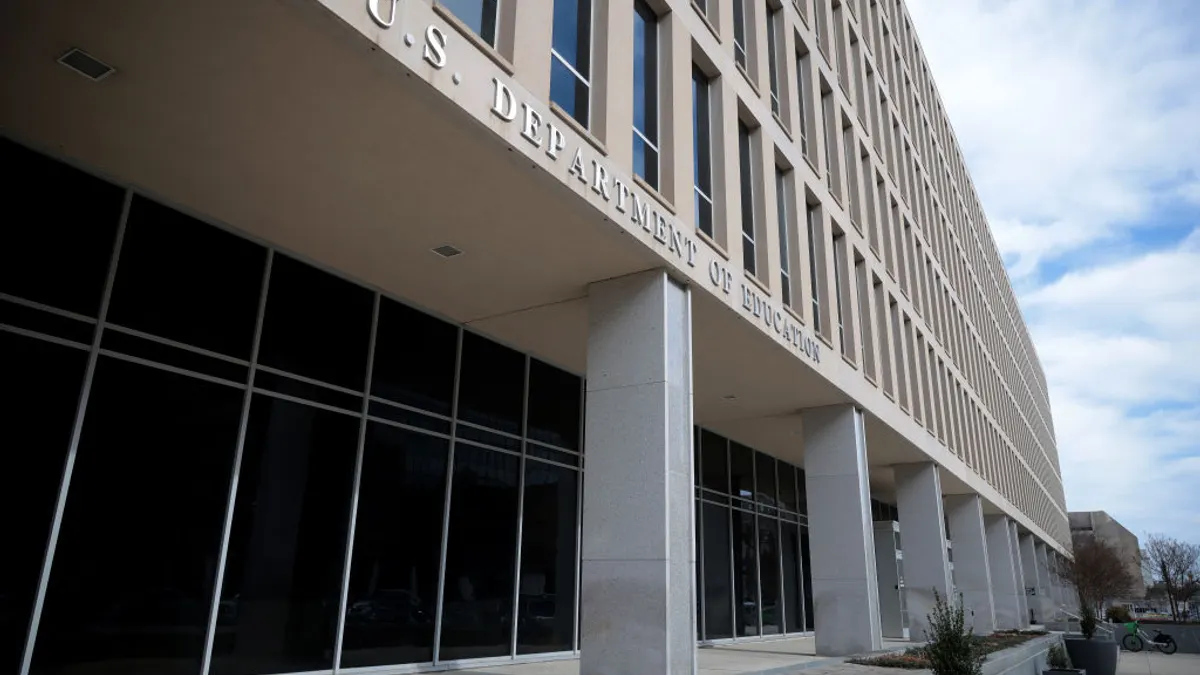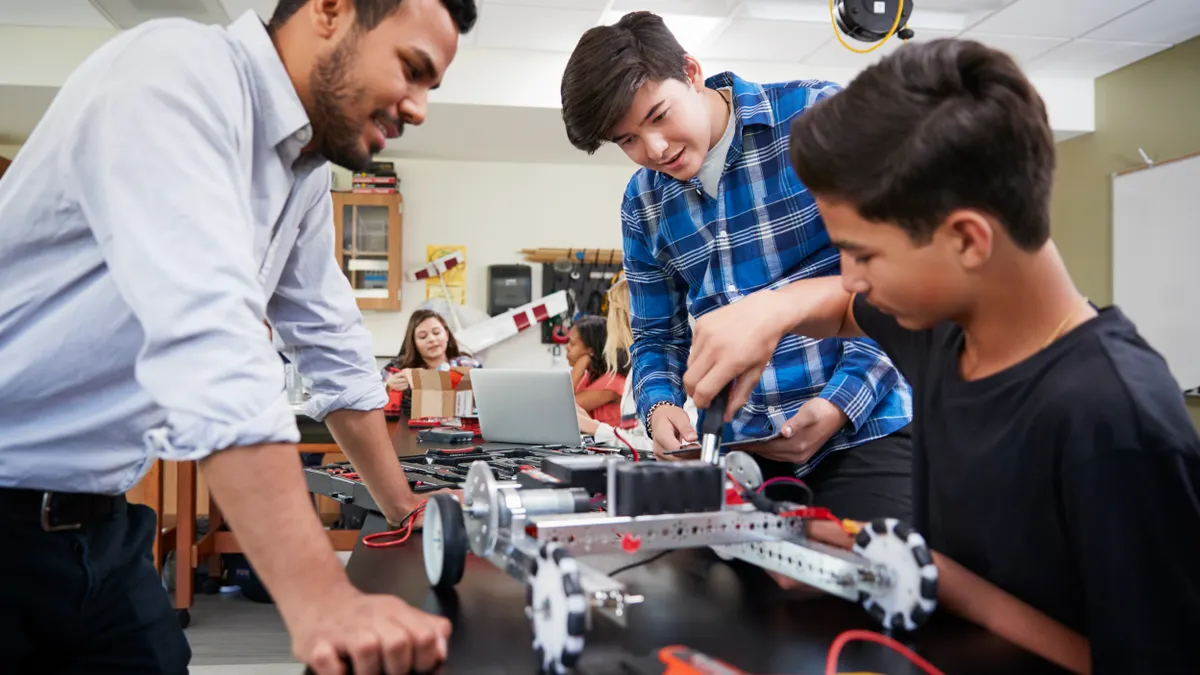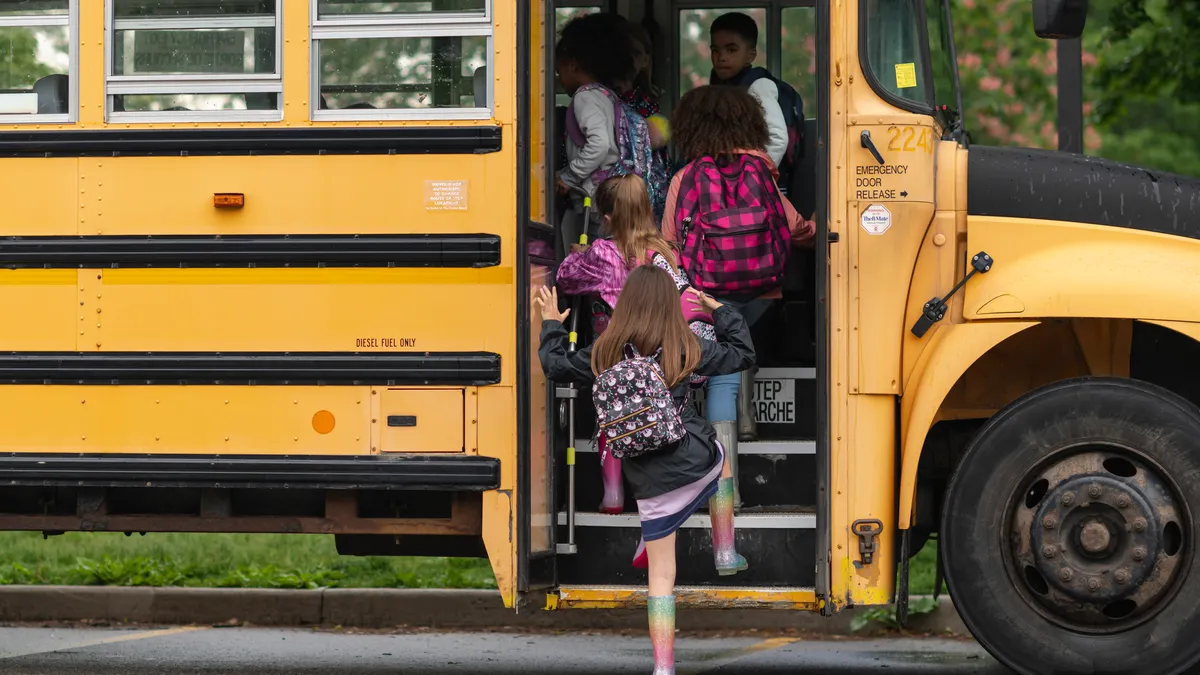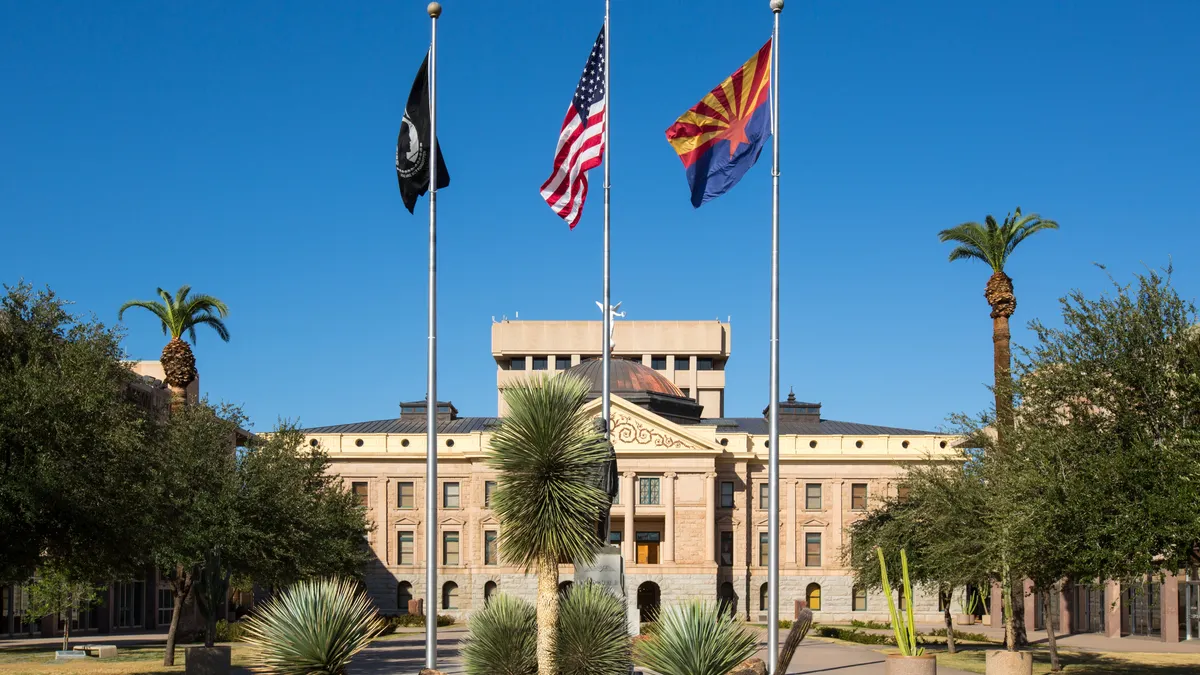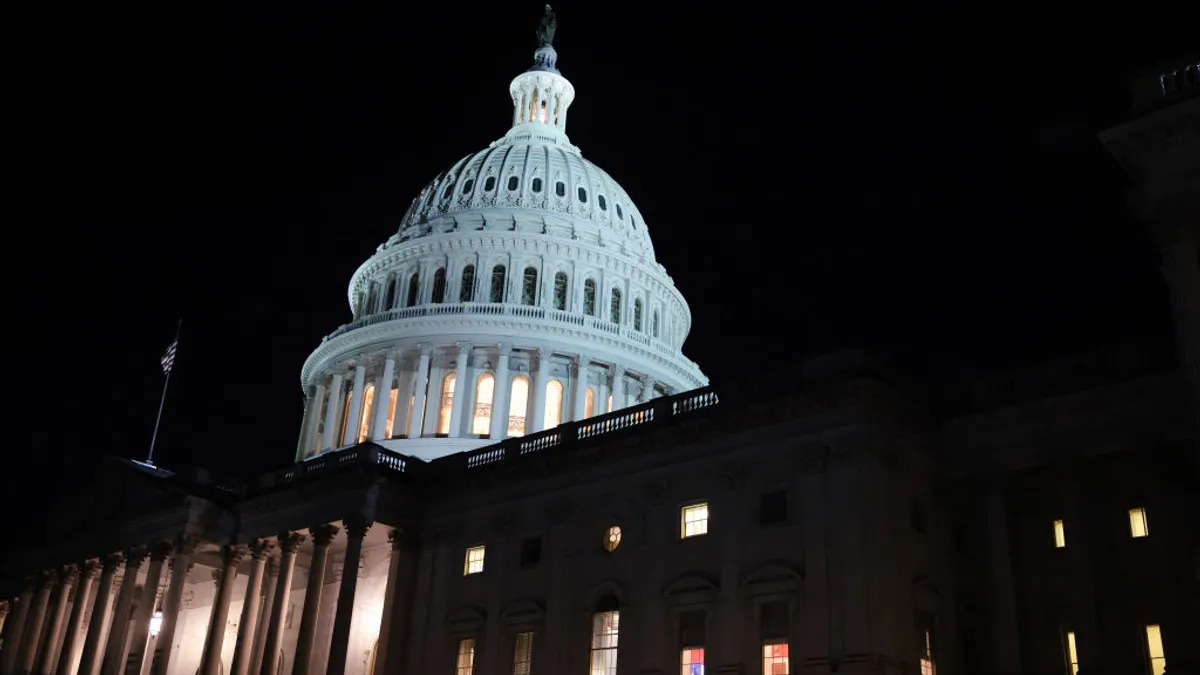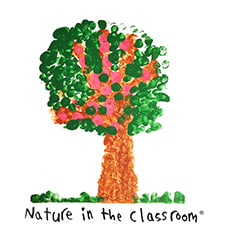After wildfires destroyed parts of California's Palisades Charter High School campus in January, students began learning virtually — and then from a former department store converted into a school. By January, the school hopes to reunite on its home campus.
Principal Pamela Magee said the most difficult aspect of the wildfires has been keeping the school community together during the recovery. The school's 3,000 students come from more than 100 ZIP codes across Los Angeles, and some students had to relocate far away, Magee said in an email.
Getting students to return home to the Palisades "is an ongoing journey," Magee said.
Severe weather like wildfires, hurricanes and tornadoes is occurring more frequently. These weather events also are hitting areas historically more immune to their destructive impact. And all of this is taking a financial, academic and emotional toll on students and educators, according to a report released Tuesday by NWEA, a K-12 assessment and research organization.
The report, timed to coincide with the week of Hurricane Katrina’s 20th anniversary, seeks to bring awareness to the challenges school systems face from severe weather, as well as to flag areas of consideration when preparing for emergency situations.
"School districts are facing so many challenges right now and often have to focus on the immediate, which makes it hard to do some of these longer-term, 'what if' emergency planning," said Megan Kuhfeld, co-author of the report and director of growth modeling and data analytics at NWEA.
Learning loss and emotional impacts
There were 27 separate weather-related disasters in 2024 resulting in about $1 billion in damages. In 2023, there were 28 weather events, according to the National Centers for Environmental Information, an office within the National Oceanic and Atmospheric Administration.
An interactive map from Undaunted K12, a nonprofit that helps school systems respond to climate change challenges, shows students have lost thousands of school days over the past six academic years due to extreme weather.
Severe weather and natural disasters can cause major financial and instructional challenges for school systems due to infrastructure damage, temporary school closures and other hardships, NWEA's report said. However, each severe weather event is unique and can have varying impacts on scale and duration for school systems.
In other words, school system preparedness and recovery models may look different depending on the severe weather event.
One of severe weather’s most common impacts on schools is lost instructional time. NWEA estimates that for every day students were out of school due to hurricanes and wildfires, there was an average of 3.6 days of instructional loss. The calculation is based on state end-of-school year standardized test data for Hurricanes Katrina, Florence and Matthew and for wildfires in California occurring between 2009 and 2017.
Actual student achievement across these events varied, likely due to differences in the length of disruption to learning and resources available for student supports, NWEA said.
"There's kind of a compounding effect of these natural disasters," said Kuhfeld. It's not just that schools were closed temporarily, but there are also disruptions in students' and educators' lives as a result of severe weather events, she said.
Extreme heat also plays a factor in learning even when schools stay open. NWEA estimates that in schools without air conditioning, a 1-degree warmer school year results in a 1% reduction in learning.
In addition to learning loss, weather events can cause anxiety, post-traumatic stress and depression in students and burnout in educators, NWEA said. Students and educators can also have physical challenges due to adverse weather conditions that cause smoke, mold and poor air quality.
Families of color and students from socially vulnerable communities can be at a higher risk for adverse impacts from severe weather due to racial and socioeconomic inequities. Research shows Black and Hispanic students saw reductions in test scores due to extreme heat at a rate three times higher than White students, the report said.
Kuhfeld said it's important to keep in mind that there are both neighborhood and community risk factors and school risk factors from severe weather events that can impact academic performances and mental health, which schools need to be aware of.
Strained finances
Not only does the aftermath of severe weather events bring additional, unexpected costs to school systems, but there is also budgeting for expenses in anticipation of more severe weather events and extreme temperatures.
Whether it's upgrading HVAC systems or making other improvements to fix aging school buildings, capital costs to support school infrastructure can be a funding challenge for districts, NWEA said.
School infrastructure maintained a “D+” grade on the American Society of Civil Engineers’ 2025 infrastructure report card, which said the average age of a public school building is 49 years.
The ASCE report said plumbing upgrades to address lead in drinking water and the installation of cooling systems amid rising temperatures are some of the top school infrastructure needs.
According to the NWEA report, underinvestment in school infrastructure negatively impacts students' health and academic performances.
NWEA is planning a follow-up report to publish later this fall with recommendations for school systems in preparing and recovering from severe weather events, as well as lessons learned from education leaders who experienced weather events in their communities.


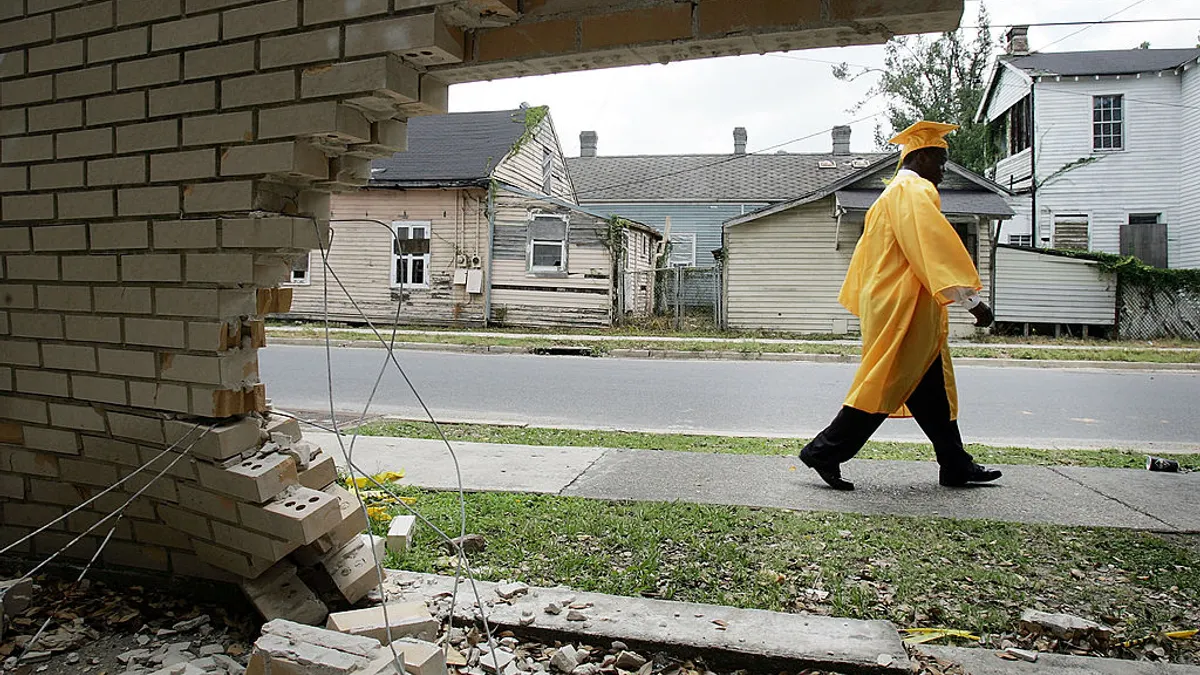



 Dive Awards
Dive Awards

